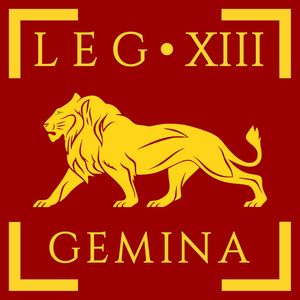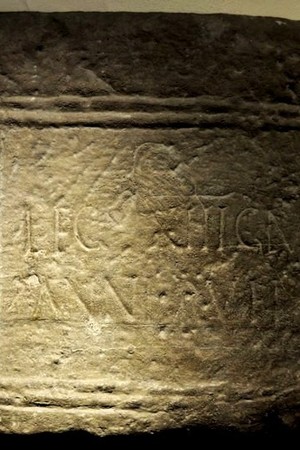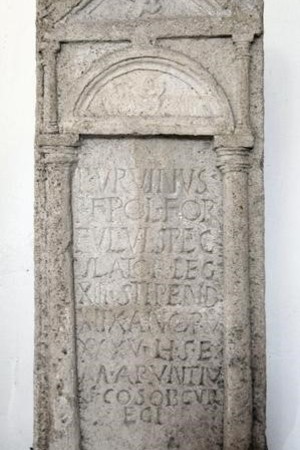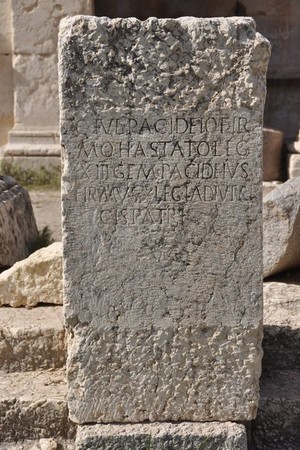Roman Legion - Legio XIII Gemina Pia Fidelis
Legio XIII Gemina (Thirteenth Twin Legion) was a Roman legion formed by either Gaius Julius Caesar or Augustus during the Republic era.
Date of existence: 57 BC. The legion existed until the early 5th century AD.
Symbol: Lion
Nicknames: Gemina (Twin/Twin), Pia Fidelis (Loyal and Loyal)
There are two theories regarding the creation of the Thirteenth Legion:
1. The legion was created by Gaius Julius Caesar in 57 BC to participate in the Gallic War (58-50 BC). It received its cognomen Gemina (Twin) during Octavian's time, who reconstituted the legion in 41 BC by assembling legionaries from various Caesar’s legions.
1. The legion was created by Octavian Augustus in 6 BC to participate in the Pannonian War and was immediately given its cognomen Gemina (Twin) because it was formed from legionaries of the Thirteenth and another unknown legion merged with it. This theory was supported by the famous 19th-century German historian T. Mommsen. However, Roman historian Titus Livius reports that legionaries of Legio XIII Gemina accompanied Caesar during his famous crossing of the Rubicon River (the boundary between Rome and Gaul) in 49 BC, which argues against this
Battle Path
- The new legion’s baptism of fire occurred during the Gallic War (58-50 BC) in the Battle of the Sabis River (modern Sambre River, France-Belgium) in 57 BC against the Nervii tribe.
- In 52 BC, the legion participated in two battles: the siege and Battle of Gergovia (now Clermont, France) and the Battle of Alesia in September 52 BC. After the Gallic War, according to Titus Livius, the entire legion, and according to Suetonius, one cohort of the legion, crossed the Rubicon with Caesar in 49 BC, marking the start of the Civil War (49-45 BC) between Caesar and Pompey.
- During the Civil War between Caesar and Pompey, the legion fought on Caesar’s side and participated in the Battle of Dyrrhachium (modern Durrës, Albania) in 48 BC and the Battle of Pharsalus in 48 BC.
- The legion also participated in defeating Caesar’s opponents in Africa (Caesar’s African campaign) in 46 BC, including the Battle of Thapsus (modern Ras Dimas, Tunisia) in April 46 BC.
- In 45 BC, Caesar disbanded the legion and settled its veterans around the city of Spello in Italy.
- The legion was reconstituted after Caesar’s assassination in 44 BC by Octavian Augustus in 41 BC, who gave the legion its cognomen Gemina. Legio XIII Gemina took part in the decisive battle of the civil war between Octavian Augustus and Mark Antony at the Battle of Actium in September 31 BC.
- After defeating Antony, Octavian transferred Legio XIII Gemina to Gaul and then, in 16 BC, to Burnum (modern Kistanje, Croatia).
- In 15 BC, the legion camped in Emona (now Ljubljana, the capital of Slovenia), commanded by Octavian Augustus’s adopted son and future Roman Emperor Tiberius. Around the same time, the legion’s vexillations were sent to Noviomagus (modern Nijmegen, Netherlands).
- In 6 AD, Legio XIII Gemina, along with other legions, participated in Tiberius's campaign against the Marcomanni Germanic tribe.
- In 9 AD, after the defeat of Quintilius Varus in the Teutoburg Forest, Legio XIII Gemina was transferred to Augusta Vindelicorum (modern Augsburg, Germany).
- In 16 AD, the legion was transferred to Vindonissa (modern Windisch, Switzerland).
- During Emperor Claudius’s reign (41-54 AD), the legion was stationed in Poetovio (modern Ptuj, Slovenia) in Pannonia.
- During the Civil War following Emperor Nero's death (Year of the Four Emperors - 68-69 AD), the legion initially supported Otho and fought for him against Vitellius at the Battle of Bedriacum (modern Calvatone, Italy), but lost and was returned to the Danube in April 69 AD. Soon after, it supported Vespasian and participated in the Battle of Cremona (June 69 AD), siding with the victors.
- In 70 AD, the legion participated in suppressing the Batavian revolt as part of Cerialis’s army.
- During Emperor Domitian's reign (81-96 AD), Legio XIII Gemina, as part of Tettius’s army, fought against the Dacians in 86-88 AD.
- In 89 AD, Emperor Domitian transferred Legio XIII Gemina to Vindobona (modern Vienna, Austria).
- In 92-93 AD, Legio XIII Gemina participated in Emperor Domitian's war against the Sarmatians.
- During the Dacian Wars (101-102 AD, 105-106 AD) of Emperor Trajan, Legio XIII Gemina was stationed in Apulum (modern Alba Iulia, Romania).
- In 115-117 AD, Legio XIII Gemina participated in Emperor Trajan's Parthian campaign (114-117 AD).
- The legion also participated in another Parthian campaign under Emperor Lucius Verus in the 160s AD.
- During Emperor Hadrian's reign, a vexillation of the legion took part in suppressing the Bar-Kochba revolt in Judea (132-136 AD).
- During Emperor Commodus’s reign (177-192 AD), the legion was commanded by future Roman Emperor Clodius Albinus, who fought against the Sarmatians.
- In the "Year of the Five Emperors" (193 AD), Legio XIII Gemina fought on the side of Septimius Severus at the Battle of Issus (modern Issus, Turkey) against Pescennius Niger, resulting in Severus's victory.
- Likely, Legio XIII Gemina participated in Severus's Parthian campaign (197-198 AD) and the sack of Ctesiphon (now near the city of Qasr bin Talu, Iraq), the Parthian capital, in 198 AD.
- In the early 3rd century, the legion was stationed in Ratiaria (modern Archar, Bulgaria).
- Vexillations of the legion fought against the Alemanni during Emperor Claudius II Gothicus’s reign (268-270 AD) and/or Emperor Aurelian’s reign (270-275 AD).
- In 295-296 AD, vexillations of the legion participated in Emperor Diocletian's Egyptian campaign (284-305 AD). After the war, Emperor Diocletian left the legion’s vexillations, along with those from Legio II Flavia Constantina and Legio III Diocletiana, in Babylon in Egypt (now Cairo, Egypt) as garrison forces.
- In the early 5th century, the legion was still stationed in Babylon in Egypt. There are no further records of the legion and its fate.
- It is unknown why the legion received the cognomen Pia Fidelis (Loyal and Faithful), but it is known that since Emperor Hadrian's reign (117-138 AD), the legion has been mentioned with this cognomen in inscriptions.
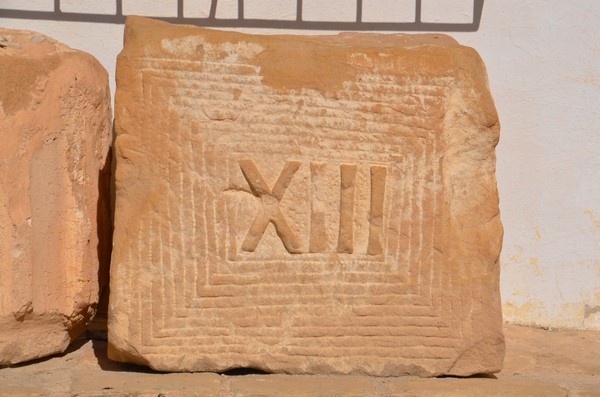 Construction tile with the legion’s stamp. Private collection. 1st century AD.
Construction tile with the legion’s stamp. Private collection. 1st century AD.
Related topics
List of Roman Legions, Legion, Legionnaire, Gaius Julius Caesar, Year of the Four Emperors, Year of the Five Emperors, Octavian Augustus, Marcus Ulpius Nerva Trajan
Literature
1. Dandelot-Collins. Legions of Rome
2. R. Kanya. A brief history of the various legions.
3. A. S. Hall, "Two Veterans of the XIII Gemini in Iconium", in: S. Mitchell (eds.), Armies and Borders in Roman and Byzantine Anatolia (1983) 35-40
4. JK Haalebos, "Römische Truppen in Nijmegen", in: Yann Le Boheck, Legion of Rome and Empire (2000 Lyon) 465-489
5. I. Piso, "Legends of the Province of the Province of Dacia", in: Jan Le Bogec, Legion of Rome, Empire of the Upper (2000 Lyon) 205-225
6. K. Wolf, "La legio XIII Gemina au Ier siècle", in: Yann Le Bohec, " The Legion of Rome and the Upper Empire "(2000 Lyon) 203-204
